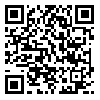Volume 9, Issue 4 (2024)
IJMPP 2024, 9(4): 1095-1099 |
Back to browse issues page
Download citation:
BibTeX | RIS | EndNote | Medlars | ProCite | Reference Manager | RefWorks
Send citation to:



BibTeX | RIS | EndNote | Medlars | ProCite | Reference Manager | RefWorks
Send citation to:
Teimuri S P, Tavafian S S, Delshad M H. An Overview on Pain Management for Painful Menstruation among Female Adolescent. IJMPP 2024; 9 (4) :1095-1099
URL: http://ijmpp.modares.ac.ir/article-32-77501-en.html
URL: http://ijmpp.modares.ac.ir/article-32-77501-en.html
1- Health Education and Health Promotion, Faculty of Medical Sciences, Tarbiat Modares University, Tehran, Iran.
2- Health Education and Health Promotion, Faculty of Medical Sciences, Tarbiat Modares University, Tehran, Iran. ,tavafian@modares.ac.ir
3- Health Sciences Research Center, Torbat Heydariyeh University of Medical Sciences, Torbat Heydariyeh, Iran
2- Health Education and Health Promotion, Faculty of Medical Sciences, Tarbiat Modares University, Tehran, Iran. ,
3- Health Sciences Research Center, Torbat Heydariyeh University of Medical Sciences, Torbat Heydariyeh, Iran
Abstract: (617 Views)
Aims: Dysmenorrhea is a common menstrual disorder characterized by painful uterine contractions, which often leads to absenteeism from school and decreased productivity.
Method and Materials: This article provides an overview of primary dysmenorrhea and its impact on female adolescents, emphasizing the significance of pain management strategies. The prevalence of primary dysmenorrhea affects approximately 70% of young women globally, underlining its public health implications. The article explores various risk factors, including biological, psychological, social, and lifestyle influences that contribute to dysmenorrhea. Additionally, it discusses the common practice of self-medication among adolescents, primarily through the use of over-the-counter nonsteroidal anti-inflammatory drugs (NSAIDs), and the potential risks associated with improper use. Effective management strategies, such as physical exercise, dietary modifications, and psychological interventions, are highlighted as essential components in alleviating menstrual pain. The importance of health education, particularly in school settings, is emphasized to improve awareness, promote healthy lifestyle practices, and foster a supportive environment for adolescent girls.
Conclusion: This comprehensive approach aims to enhance the overall quality of life while addressing the specific health challenges faced by females during their critical developmental years. Ultimately, investing in the health and well-being of adolescent girls is vital for fostering future generations and advancing national progress.
Method and Materials: This article provides an overview of primary dysmenorrhea and its impact on female adolescents, emphasizing the significance of pain management strategies. The prevalence of primary dysmenorrhea affects approximately 70% of young women globally, underlining its public health implications. The article explores various risk factors, including biological, psychological, social, and lifestyle influences that contribute to dysmenorrhea. Additionally, it discusses the common practice of self-medication among adolescents, primarily through the use of over-the-counter nonsteroidal anti-inflammatory drugs (NSAIDs), and the potential risks associated with improper use. Effective management strategies, such as physical exercise, dietary modifications, and psychological interventions, are highlighted as essential components in alleviating menstrual pain. The importance of health education, particularly in school settings, is emphasized to improve awareness, promote healthy lifestyle practices, and foster a supportive environment for adolescent girls.
Conclusion: This comprehensive approach aims to enhance the overall quality of life while addressing the specific health challenges faced by females during their critical developmental years. Ultimately, investing in the health and well-being of adolescent girls is vital for fostering future generations and advancing national progress.
Article Type: Brief Communication |
Subject:
Sport Sciences, Therapy and Medicine
Received: 2024/10/15 | Revised: 2025/05/19 | Accepted: 2024/10/27 | Published: 2024/12/28
Received: 2024/10/15 | Revised: 2025/05/19 | Accepted: 2024/10/27 | Published: 2024/12/28
Send email to the article author
| Rights and permissions | |
 |
This work is licensed under a Creative Commons Attribution-NonCommercial 4.0 International License. |







